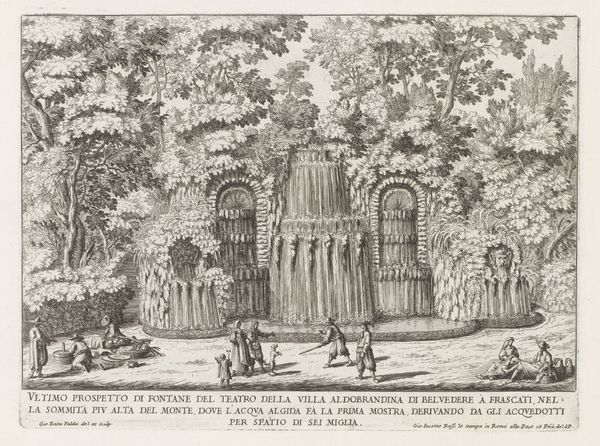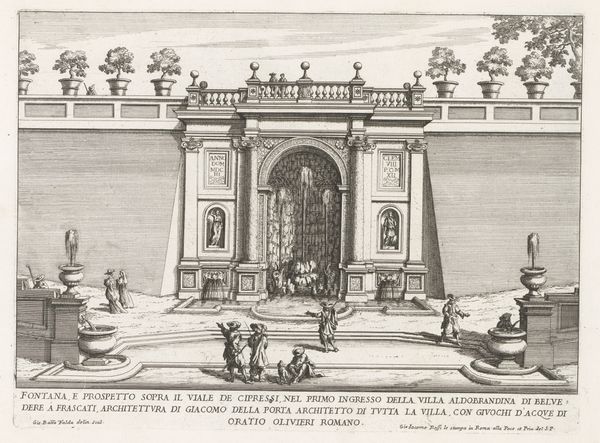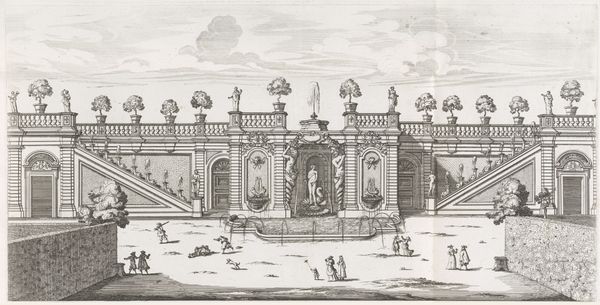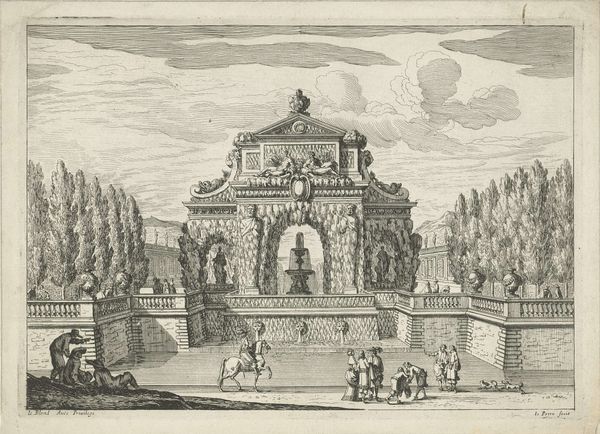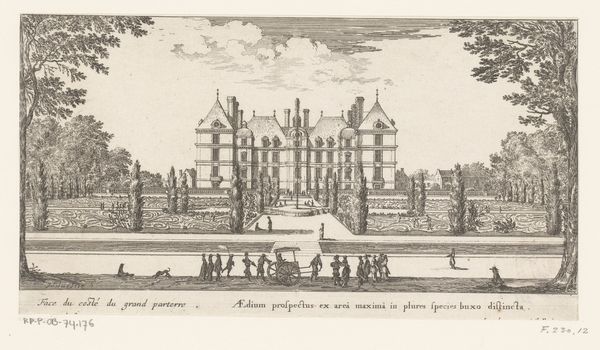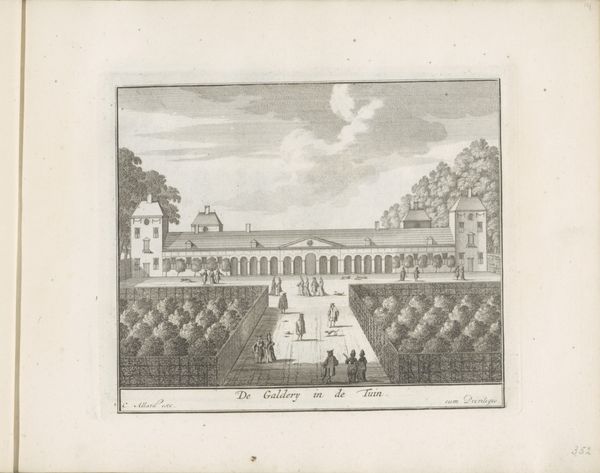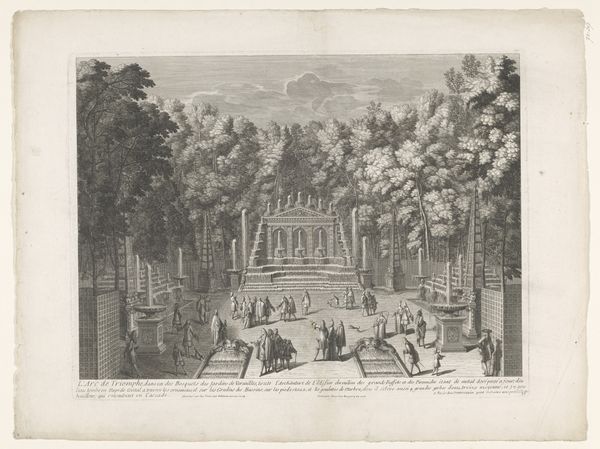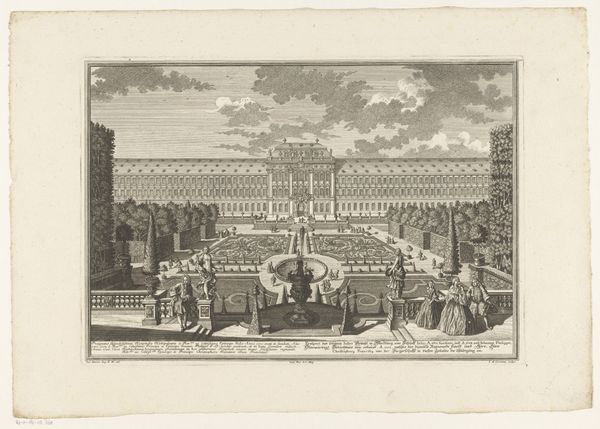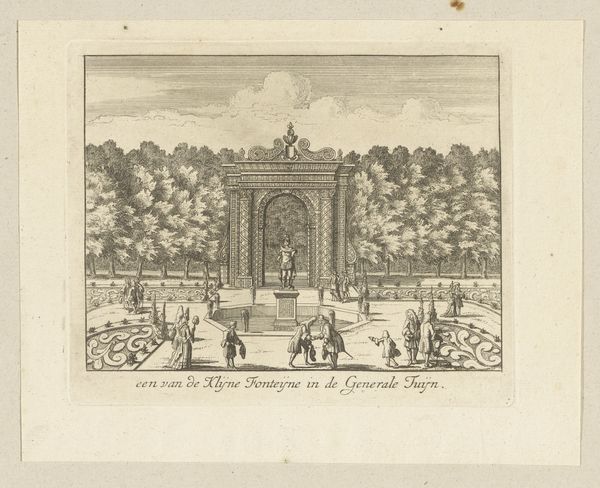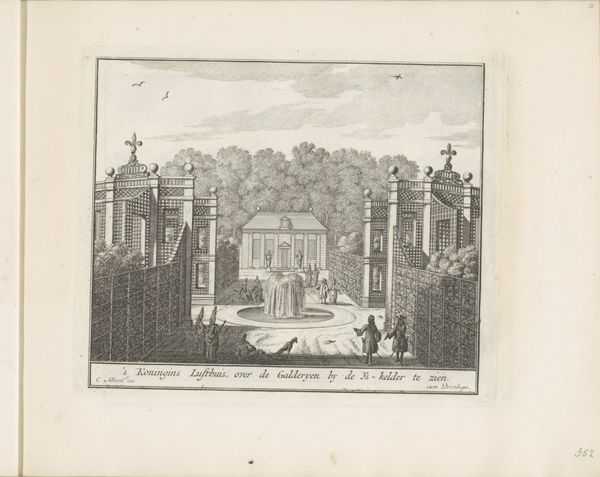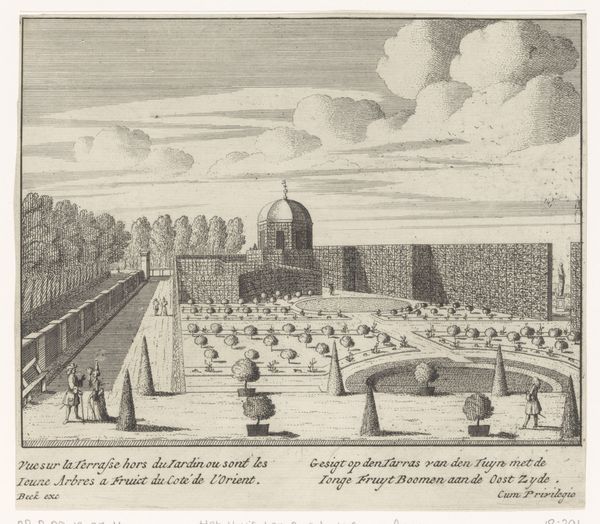
print, etching, engraving
#
baroque
# print
#
etching
#
landscape
#
cityscape
#
genre-painting
#
italian-renaissance
#
engraving
Dimensions: height 233 mm, width 348 mm
Copyright: Rijks Museum: Open Domain
Editor: This is "Fountain in the gardens of the Villa d'Este at Tivoli," an etching and engraving by Giovanni Francesco Venturini, created sometime between 1653 and 1691. It feels very ordered, almost staged, despite depicting an outdoor space. What stands out to you as a historian? Curator: It’s a fascinating portrayal of power through landscape, isn't it? Look at how Venturini renders the gardens. It's not just a pretty view; it's a statement about control and the imposition of order onto nature. Do you notice how the print emphasizes the artificiality of the landscape with those regimented fountains and precisely trimmed hedges? Editor: Yes, the strict lines are hard to miss! What does that suggest about the role of gardens back then? Curator: Gardens, especially those like at the Villa d’Este, were visual declarations of wealth, status and authority. It demonstrated one's ability to command resources, both natural and human, to realize such an elaborate space. This print then serves as a kind of propaganda, disseminating this image of power to a wider audience. Think of the Renaissance idea of the "ideal city," but translated into landscape. What purpose do you think prints like these served in circulating such imagery? Editor: It’s like social media for the 17th century! Showing off and influencing others, creating trends of taste, spreading socio-political agendas by those in power… Curator: Precisely! And it’s not just about the aristocracy; it’s about crafting and shaping a very specific idea of Italian grandeur for a European audience. By understanding that prints like these circulated widely, we gain a deeper insight into the aspirations and the image that Italian elites wished to project onto the global stage. It allows us to critically examine art’s public role and its influence on the creation and maintenance of socio-political structures. Editor: That’s incredible. I hadn’t considered how deliberately these images were crafted to convey so much more than just the beauty of a garden. Curator: Exactly. It reveals how landscape art can be read as a cultural and political text, shaped by and also shaping social power. Editor: Thanks! Now I'm looking at landscape art in a totally different way!
Comments
No comments
Be the first to comment and join the conversation on the ultimate creative platform.
